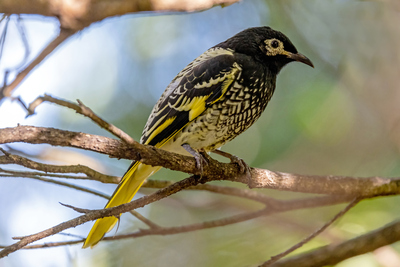Sustainability commitment key for LAPP Australia MD

To create more natural habitat for the increasingly rare regent honeyeater, LAPP Australia Managing Director Simon Pullinger began planting the types of gum tree best suited to this critically endangered native bird.
With an estimated 250–350 of the species left in the wild, habitat loss has been identified as the primary reason for the regent honeyeater’s declining numbers.
As part of community conservation efforts, Pullinger helped plant 250 new saplings, including the Eucalyptus sideroxylon (red ironbark), Eucalyptus melliodora (yellow box), Corymbia maculata (spotted gum) and Eucalyptus robusta (swamp mahogany).
However, when native fauna such as wombats, kangaroos and wallabies — plus the invasive deer population — showed an interest in this bushland regeneration, Simon wanted to harmlessly dissuade them from eating his new plantings.
After thinking about how to protect the trees 24/7 while he was at work in Sydney, the answer came when he was inspecting the recycling needs of LAPP’s industrial cable, automation and connectivity solutions operation.
“When I looked at the cylindrical cardboard spools for cable drums that we were gathering for the company’s recycling and sustainability program, I thought, ‘This is good, and we can use some of these ourselves out at the family’s bushland shack as “collars” to protect the young plants’,” Pullinger said.

“The whole family loves going out there to give the bush a helping hand to survive and flourish, and working with the local land care group (which takes the rest of the collars to use across a broad area of bushland).”
To protect saplings from becoming destroyed — and to conserve and retain water around their roots — dozens of newly installed cable drum collars now help conserve them, without the need for non-biodegradable materials to be introduced to the property.
“We didn’t set out to build an environmental showpiece, because that’s not the way it is done in the bush. Out in the country, it is second nature to use and reuse resources. It is the way people live. It is simply good common sense,” said Pullinger, who has also recycled a fuel stove more than 100 years old, which his father-in-law had stored in his home’s garage for more than 50 years.
“We cleaned it up and lit it up and — wonderfully — it burst back to life after lying disused for decades. It was a small thing, but real sustainability practices start with individuals and a mindset,” Pullinger said.
While Pullinger’s sustainability initiatives are a personal choice, they also align with the corporate objectives of the global LAPP Group.
Matthias Lapp, Chairman of the Board at Lapp Holding SE, said, “As a family business that is driven by the search for forward-looking solutions for future generations, it is our duty to treat the resources of people and the environment responsibly.
“For us, looking at the impact of our work and our products is part of the development of promising innovations. Sustainable thinking influences our decisions every day. We tackle the challenges we face together — with the ideas, expertise and strength of all our employees.”
How Australia can increase its circularity rate
An expert said the solution could lie in developing onshore processing plants and creating...
Scouts SA secures future of its recycling centres
Scouts SA has partnered with Container Deposit Scheme specialist Return-It to grow its Scout...
Mining waste provides strong boost to concrete construction
Flinders University researchers are turning mining waste into a tool for sustainable...










